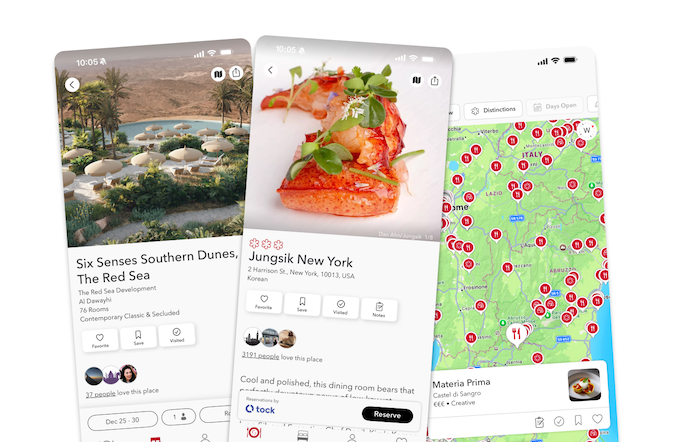NEW travel guides:
Rio de Janeiro, Brazil
The famed city-wide celebration of the Rio Carnival, highlighted by the choreographed samba parades, uproarious street parties, and intricate floats, is indisputably a multi-cultural street food paradise. One sweet favorite is the ubiquitous brigadeiro, small truffle-like balls made of butter, cocoa, and condensed milk, sometimes topped with almonds, sprinkles, or coconut flakes. According to legend, a Rio-based confectioner first whipped up this sweet treat to promote the 1946 presidential candidacy of Air Force brigadier Eduardo Gomes (who was ultimately not elected, but the recipe won the hearts of Brazilians).
Other treats include quindim, a popular yellow custard with sugar, egg yolks, and ground coconut; bananada, a sugar-packed candy with banana pulp; or the classic dessert, Romeu (a large slice of cheese) e Julieta (a slice of sweet guava paste), is a time-tested flavor combo.

For heartier fare, carnival-goers seek out the national dish, feijoada, a long-simmered pot of black beans, beef, and pork, served with rice, orange slices, and farofa; meal (made from toasted cassava), or alternately, a bowlful of moqueca baiana, Portuguese fish stew with tomato and red pepper, cooked in a coconut lime sauce. At Rio’s MICHELIN-Starred Térèze, the menu features traditional Brazilian dishes with international influences, like moqueca risotto with cachaça-flambéed shrimp and toasted coconut.
Dates: February 28th – March 8th.
Check out our full hotel selection to plan your next stay
Nice, France
With pagan roots dating back to medieval times, the Nice Carnival is as vibrant as ever, although some traditions—like tossing flour and eggs into the costumed crowd—have since been outlawed. Today, confetti supplies the celebratory vibe without the food waste. Each year, on the final day of the celebration, officials burn a symbolic Carnival King at sea. Since 1873, special parades called the Bataille des Fleurs (Flower Battle) feature baskets of locally-grown blooms thrown at the onlookers from giant paper maché caricature floats.
Nice’s most emblematic snack is deep-fried ganses (li gansa nissardi), shaped like a knotted scarf, derived from the traditional Niçois men’s neckerchief. Thinner and crunchier than a donut, the dough—essentially butter, eggs, and a zest of lemon and orange blossom water—is rolled out into vertical strips, cut diagonally to make diamond shapes, and then slit like a buttonhole to make the bow-like loop. Swiss chard pie (tourte de blettes) is a heartier staple. Sold in flat squares, these treats can be savory or sweet, depending on the recipe. Locals devour them as a lunchtime snack with pine nuts or a veggie-heavy dessert, infused with orange blossom water and raisins, and dusted with powdered sugar.

Dates: February 12th to March 2nd
Check out our full hotel selection to plan your next stay
Venice, Italy
Venice Carnival brings to mind elegant masked balls and elaborate costumes, but it’s also known for the much-revered fritelle, deep-fried dough balls studded with pine nuts, candied fruit, and raisins. The original recipes dates back to the 14th century, and there was a time when these sweets could only be made by licensed artisans, the fritoleri, who even had their own guild. These days, fritelle are spiked with rich fillings like whipped cream or silky zabaione, a rich, sippable dessert made with egg yolks, sugar, and sweet wine.
Venetian party-goers fuel up at pastry shops with galani, crispy corrugated ribbon-like deep-fried strips with a drop of grappa or wine in the dough. Another sugary street food is the seasonal ravioli di Carnavale, crimped squares of pasta dough, deep-fried and stuffed with ricotta, chocolate, and a splash of rum.

Dates of the 2025 Carnival: Friday February 14th – March 4th
Check out our full hotel selection to plan your next stay
New Orleans, Louisiana
The celebration of Mardi Gras in New Orleans, known for boundless revelry, balls, and parades, brings with it a quintessential glittering dessert: King Cake, a ring-shaped brioche-like confection, iced with bright purple, green, and gold frosting (symbolizing justice, faith, and power) and sprinkled with crunchy sugared pecans. Following the ancient French tradition of Epiphany cakes, which contain a concealed bean or ceramic trinket, the Mardi Gras version hides a tiny plastic baby in the dough (regarded as the three kings’ search for baby Jesus); the lucky person who discovers the baby in their slice is crowned “king” or “queen” for the day. Another local crowd-pleaser is a dish of Bananas Foster, a 1950s-era recipe with caramelized-brown-sugar bananas soaked in banana rum liqueur and set aflame.

Dates: January 6th (Epiphany) – March 4th (Mardi Gras)
Check out our full hotel selection to plan your next stay
Martinique, the Caribbean
On the island of Martinique, the energy of Carnival, with the melody of horns, percussive rhythms of steel drums, and costumed street parades, is accompanied by a long heritage of Creole dishes, handily scooped up in the street. A variation of the French beignets, deep-friend donuts are filled with banana or spiked with cinnamon, nutmeg, vanilla, lime, and iced with powdered sugar or grated coconut. Another popular dessert is a creamy coconut flan, le blanc manger coco, made from coconut milk, eggs, and vanilla. For savory snacks in the lead-up to Lent, celebrants will find no shortage of vegetarian and fish specialties, which include everything from codfish fritters (acras) to beignets with tapioca flour filled with potatoes, cabbage, or eggplant.

Dates: March 2nd-March 5th
Check out our full hotel selection to plan your next stay
Hero image: NOLA's French Quarter is livelier than ever during the annual citywide celebration. © Photoservice/iStock









